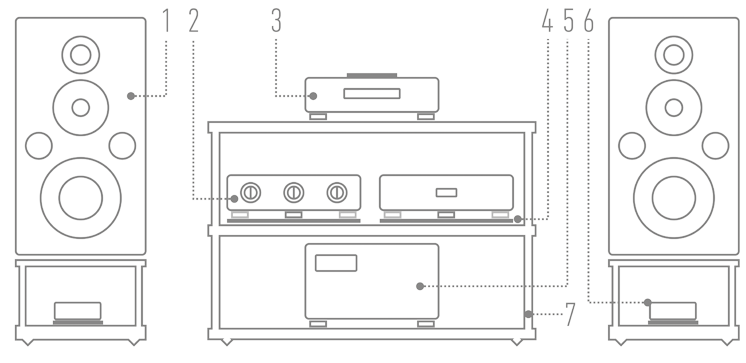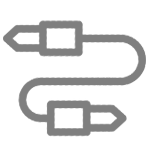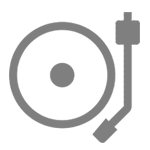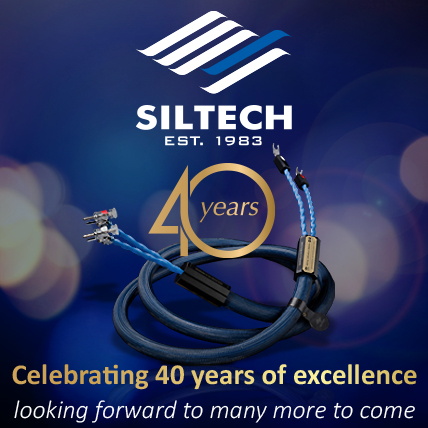|
Compact Disc Player Ayon Audio
Manufacturer: AYON AUDIO |

|
Review
Text: Wojciech Pacuła |

|
No 198 November 1, 2020 |
|
PREMIERE

The new player replaces the CD-35 model, which we auditioned for the first time, together with the company’s owner, Gerhard Hirt, at the Krakow Sonic Society Meeting in November 2016; a month later I tested the player in the "High Fidelity" reference system (more HERE ). The device turned out to be so good that we agreed with Gerhard that we would use it to develop an "ultimate" device. As a result of endless talks, auditions and consultations, a unique player was ultimately developed, the CD-35 HF EDITION, which became our reference player (HF Edition = High Fidelity Edition). Only a limited quantity was ever produced - 50 units, in two series; in our system we use unit with serial number 01/50. | SACD The full name of the new player is: Ayon CD-35 II Reference CD-Player. It immediately points out that we are dealing with a COMPACT DISC player, not a Super Audio CD one. The history of Ayon Audio related to the SACD format is not long, the first device of this type in its lineup was the CD-35 model. But also Gerhard, a true vinyl records lover, believes that in the digital world their counterpart are DSD files. Nevertheless, for practical reasons, as well as the desire to refine the sound of the CDs, all previous players with the Ayon logo and - as it turns out - later ones, were "Compact Disc Players". Although, as it is otherwise known, they actually featured SACD transports. In the introduction to the CD-35 II user manual one reads:
There is a lot of truth in this, one can’t argue with that. Yet a votum separatum to such an approach would have to be submitted by the well-known and highly regarded „engineering” companies such as: dCS, Esoteric, Accuphase or Soulution, that do offer SACD players - their devices would also have to suffer from compromises. Anyway, the CD-35 HF Edition itself would be suffer consequences of such compromise. And neither they nor it do suffer for that reason. Everything depends on the approach to this issue, which is to some extent a "philosophy" one identifies with. However, I understand Gerhard's decision, as he is a pragmatist and not an ideologist. All one has to do is to play a CD using the CD-35 II to realize that CDs are played in a quieter, smoother and more reliable way than with the CD-35. The transport section examined with the CD Check disc turned out to be better than in the reference CD-35 HF Edition player. This is not yet the level of the Philips CD-Pro 2 transports, or even the new Stream Unlimited CD-Pro 8 S transport, which can be found in the Gryphon Ethos player. Both play all five tracks without interruptions, while the CD-35 II plays four tracks, and on the fifth it freezes occasionally (more about the album HERE). However, this is a big step up from the CD-35. As we know, it is a Stream Unlimited transport based on the multi-format Sanyo mechanism with control software developed by the Austrian engineers, the people who developed the CD format and former Philips employees. Ayon Audio maintains close relationship with the Stream Unlimited, mainly thanks to Gerhard's personal contacts. From the outside, the transport looks almost identical to that of the CD-35. A visible change in relation to the CD-35 is only a resignation from a separate CD-clamp - the one in the CD-35 II is small and has been permanently mounted in a heavy, glass hatch closing the disc chamber. I know from experience that a good clamp, well fitted, is an important element of mechanical disc transport. Usually, however, it is a separate element. I asked Gerhard, who is grounded due to the pandemic in his mountains, about these and other changes. | A few simple words… GERHARD HIRT First a few words about the SACD in general. The production of the SACD authentication chip by Philips / Sony was stopped more than 12 years ago. Even Sony lost or given up interest in SACD format a long time ago. In reality, the SACD was dead long ago, we have to accept that. Why did Ayon include SACD in the previous CD-10 and CD-35 models? With the introduction of our legendary PCM-DSD converter at the time, we also activated the existing SACD option as a by-product. Over time, however, it has become clear that customers clearly prefer their CD collection to SACD, not just because of their huge music selection. We should not forget that in the 40 years of CD existence, there is music material, which is not available neither on LP or as downloads etc., let alone all special CDs such as MFSL, Japan pressings, special and limited editions etc. That means that customers play CD's on their CD-10 or CD-35 and activate the PCM-DSD converter additionally and thus SACD level is achieved. That was the decisive point why we removed the SACD option from the latest Ayon player generation, the CD-10 II and CD-35 II again. We believe that all Ayon customers who were still interested in SACD at the time have now bought a CD-10 or CD-35 player. With the CD-10 II and CD-35II we were able to improve CD playback again. Why? - SACD players are always a compromise, everything has to be available twice and the SACD drives are not as stable as classic CD drives; SACD drives are also more prone to failures and one should not forget the high motor speed, which is a disadvantage for error correction. With all the experience from our previous models (CD-10 and CD-35) we were able to question, examine and optimize everything about CD playback again. An extensive fine-tuning followed and we also optimized our PCM-DSD converter again. Overall, we can proudly say that we have managed to bring CD playback to the SACD level. GH | Ayon CD-35 II Signature The CD-35 II is thus a Compact Disc player. It is available in Basic and Signature versions. The latter offers a PCM-DSD converter and some higher quality components. It is a top-loader, with a tube, class A, non-feedback analog output stage and a tube power supply for it. It also offers a wide range of digital inputs, because in addition to the classic 75 Ω S/PDIF (RCA + BNC), 110 Ω AES/EBU and USB inputs, there is also an I2S input (utilizing a RJ45 socket) for the PCM signal and a professional 3 x BNC input for DSD signal that is not common in home audio products. Among the main features of the new player, Gerhard mentions:
The digital to analog conversion is done by two AKM 4497EQ chips, one per channel, supporting PCM signals up to 768kHz / 32 bits and DSD up to DSD256. Before signal gets to them, we can use the "secret component" of the Ayon Audio, namely the proprietary digital D/D converter. This is an optional element, one has to pay extra for, but without it the CD-35 II will be a bit crippled. In this circuit, the PCM signal from CDs or digital inputs is converted into DSD. There are two values to choose from: DSD128 and DSD256. I always use the latter because it leaves much less high frequency noise (outside the audible frequency range) in the signal than the classic DSD conversion. But you can also upsample the DSD signal, for example from the USB input; 3xBNC inputs will not benefit from it. Another option is a preamp section. The signal in the CD-35 II is amplified in a balanced circuit, so next to the two analog RCA inputs there is also an XLR input. Volume control is carried out in a PGA series integrated resistor ladder. The volume can be changed either by buttons on the top panel or by using the aluminum remote control, which also has upsampling access and we can use it to choose one of the two digital filters - I use filter 1. The information displayed on the front of the device indicate the track number and volume level. It is a very solid product that looks great on a shelf. | SOUND HOW WE LISTENED TO IT | The Ayon Audio CD-35 II player was tested in the "High Fidelity" reference system, and its sound was compared to the reference CD-35 HF Edition (№ 1/50) and to the analog system which it consisted of: the Thrax Audio Yatrus turntable with the Etsuro Urushi Bordeaux cartridge, the Shroeder CB tonearm and the RCM Audio The Big Phono preamplifier; the latter costs PLN 130,000./p> 
The player was powered by two cables (alternately): Siltech Triple Crown Power and Harmonix X-DC350M2R Improved-Version, and the signal was sent via RCA interconnects (I prefer this method of transmission): Siltech Triple Crown and Crystal Cable Absolute Dream. The devices were placed on their own feet on the top shelf of the Finite Elemente Master Reference Pagode Edition rack. Recordings used for the test | a selection → Compact Disc The fact that my reference player, the CD-35 HF Edition, sounds better was not a surprise to me. Its sound is more resolved, deeper and darker - it is closer to the sound of an analog tape than to a vinyl record. The treble has a more natural attack and decay with it, and the bass reaches deeper - by the way, the whole tonal balance is set lower with it. So there was no surprise. But I was blown away by how close I could put these two players were on the axis: good → perfect. I'm not talking about quality, but about character. If we listened to these devices without direct comparison, for example, one hour apart, we would say that they are cut from the same material, they are almost identical. And this shows that even in such an "ancient" and technologically backward field as Compact Disc playback, there is a constant progress. The tested MkII version of the player sounds even better with CDs than the older, basic version of the CD-35 model. This sound is extremely energetic. Every good CD or SACD player shows how much still needs to be done for the files to compete with physical media in this respect. The CD-35 MkII clearly outperforms them. This presentation is dynamically open, and therefore strong and credible. The John Coltrane’s Giant Steps, in the version released for the 60th anniversary of its premiere, listened to in this respect, gained vigor, pace and momentum. |
I really like this new remaster because it is dark, but also very resolving. With the CD-35 MkII these advantages were clear, but the player added a spark to them, which made it sound closer to the vinyl re-edition of this album, released in 2008 on two 45 rpm discs by Rhino ("Atlantic 45 RPM Master Series"). The cymbals reproduced with the CD-35 II were placed a bit closer than with the CD-35 HF Edition, they also had a stronger attack. This made the recordings shine and vibrant, and shortened the perspective. 
Interested in how it relates to recordings in which the cymbals are simply strong, I reached for the re-edition of The Velvet Underground’s Loaded (this is the album for which the cover was prepared by our compatriot Stanisław Zagórski; more HERE). In the song Who Loves The Sun the cymbals hit hard from time to time. With the tested player, they were strong, expressive, had an excellent "weight". Its energy was high, it was sort of a "live-like" performance, and yet I did not think for a moment that it was too strong or that it was too much. The treble on this disc didn’t have such a natural richness, such a natural timbre, as when I listened to it with the CD-35HF Edition. But also this energy, this "directness" was probably even better than with my player, resembling what I heard with Gryphon Ethos and a while back with the Accuphase DP950 / DC950 two-box SACD player. The Countdown To Extinction by Megadeth, played right after, confirmed everything that I’d heard before. It is "only" metal music, but it is with such discs that we have a conflict between the need for energy, dynamics and timbre. It was not here this time - the dynamics was high, the energy was excellent, and the timbre was open, but never too bright. It is a player that sounds exceptionally saturated, dense. Listening to Getz / Gilberto and The Oscar Peterson Trio from the reference Master CD-R versions burned by Mr. Winston Ma from his remaster was extremely pleasant (more HERE http://www.highfidelity.pl/@numer--105&lang=en ). Because it is also a full spectrum sound. There is a strong, fleshy bottom, and a strong, clean - very clean! - treble, all tied up with a dense midrange. The upper bass is emphasized by mass, so the double bass and kick drum on the above-mentioned discs, maybe even more on the MIWAKU by Mayo Nakano Piano Trio, played from the Glass Master CD-R version, hit a bit harder than usual, was more "present". There is a momentum in this performance, and a place for intimacy, because Joao Gilberto's vocal was beautifully saturated and placed close to me. With big presentations, there is a nice depth and the right perspective. But it is also a sound with the foreground placed close to us. Its energy, saturation and stronger mid-bass mean that it is in front of the line connecting the speakers and that the sound is "here and now". The presentation is incredibly immersive and you can listen to music for hours, but always in full alertness, in full awareness, never half asleep - this is not a "cozy" player. Finally, I looked at what we lose by giving up SACDs for the sake of better CD playback. So I compared two layers of hybrid SACDs - CD on CD-35 MkII and SACD on CD-35 HF Edition. However, this is always a compromise, because the CD layer on hybrid discs usually sound worse than the same music from a regular CD - that's why Sony initially offered only single-layer SACDs, and recently SHM-SACD discs enjoy such popularity in the upper level of audio stratosphere. To avoid mistakes, I reached for discs released in Japan by the "Stereo Sound" magazine - the same master, the same technique of making the disc, but offering separately a CD and a single-layer SACD. | Our albums ⸤ FRANK SINATRA Sinatra at the Sands Reprise/Stereo Sound Reference Record SSVS-011/014 | SACD + CD 
In 1966, the Reprise Records, founded by Frank Sinatra, released a double album recording of a the concert he gave at the Copa Room of the Sands Hotel and Casino in Las Vegas. Although it is hard to believe it was Sinatra's first live album. It consisted of selected songs from concerts recorded in January and February of the same year. He was accompanied by the best - Count Basie with his orchestra and Quincy Jones as the arranger and conductor. In 1989, also Reprise Records, released a fantastic album entitled Live at the Sands (Before Frank) with recordings of Basie's orchestra, warming the audience up for Frank Sinatra's performance; in 2013 its remaster, on LP and SACD, was presented by the Mobile Fidelity Labs. The version of the Sinatra at the Sands album I would like to mention is exceptional. It was released in 2017 by the Japanese Stereo Sound Reference Record, part of the "Stereo Sound" magazine, the most important audio magazine in Asia. This release is based on a "flat transfer" made of analog master tapes that the publisher, Warner Bros., made in 2009 for a new remaster. At that time, the SHM-CD was released in Japan as part of the "Sinatra Society Presents" series (No.5). The release in question includes two discs - a single-layer SACD and a CD, with exactly the same material. Both discs were released in the same way as SHM-SACDs, i.e. they have turquoise varnish. The sound of both versions is excellent. There is a lot of air in it, the vocal is at a distance from us, but it is also clear, selective. You can perfectly hear the dynamic work of the brass section of Basie's orchestra, and the tonal balance is really very nice. The SACD version is denser and has a much better captured atmosphere of the event. But the CD is also excellent - it sounds much better than the 2009 SHM-CD version. ♦ online.stereosound.co.jp In this comparison, the difference between the CD-35 HF Edition and the CD-35 II was greater than in the CD-only comparison. It was not a very big change, but a significant one. SACDs offer more depth, better perspective and smoothness. There are more sounds on them, and thus more "music". Interestingly, more details could be heard on CDs played from the CD-35 MkII. But it was still a beautiful, smooth, resonant performance with exceptional energy. I am not of the same opinion as Gerhard and I think that SACDs sound better than CDs, even if we use the PCM-DSD processor in Ayon with the latter. It is phenomenal and it is the real driving force behind this sound, with the help of the tube output stage. But also the sound of CDs from the CD-35 II - if the memory serves, is much better than from the CD-35. I will come back to the matter again when we test the CD-35 II HF Edition player. Yes, the High Fidelity Edition of this device is ready - on the occasion of the 200th issue of our magazine, 35 devices, numbered and signed by Gerhard, will be available for sale. | Summary The new Ayon Audio CD player is one of the best devices of this type available on the market, regardless of the price. It outperforms the CD-35 MkI (the basic version), because it sounds more energetic, cleaner and even more saturated. If SACDs are not your priority, I don't see any flaws in it. Yes, the bass is bit „turned up” and you have to confront it with your own system. But it is a compact, dense and multi-colored bass, with an excellent focus. The midrange is saturated and dense, making the vocals beautiful in their "presence". They will be moved a bit closer to us, but this is what digital sources usually lack - here we have it for free. It is a sophisticated source with great functionality that will be an owner’s pride in any advanced, sophisticated audio system./p> | DESIGN The CD-35 II is a Compact Disc top-loader with an analog preamplifier and digital and analog inputs. It is a classic design for this manufacturer. The style of Ayon Audio products has not changed for years. Looking at my Spheris III preamplifier, which I have had for a long time, I come to the conclusion that this consequence makes sense. FRONT AND BACK | The chassis is very solid, because it is composed of aluminum flat bars joined in the corners with elements with rounded edges (quarter rounds). The top and bottom are equally thick. On the front there is a dot-matrix display with a red filter. We can read on it how many tracks the disc we are playing has, the time and volume level (in dB). On the side there are small subtitles telling us about the selected digital filter and the applied upsampling method. It is a top-loader, i.e. the disc is placed on top and closed with a lid. Here the transport is attached from the bottom to the top plate (it is suspended). It is covered with damping mats, but it does not look particularly sophisticated - control elements seem to play a key role here. The control buttons are illuminated in red. It differs from the CD-35 only by the lack of the SACD / CD button, otherwise it looks the same. Even the name was left without the 'II' note, apparently the chassis are the same for all CD-35 versions. The back is also exactly the same. There are solid RCA and XLR inputs and outputs (gold-plated), gold-plated BNC sockets for DSD and PCM inputs. There are also switches to select the active analog output, change the maximum output voltage, and also determine whether the output voltage remains the same as when it was last turned off, or if it returns to a low value. It's a good, solid, extremely functional design. INSIDE | Inside, everything looks very similar to the CD-35. It is a circuit based on many specialized boards. Some are the same as the CD-35 and others are new. The latter are for transport control and its power supply, the former - for analog and digital sections. In the digital part, the signal, after being read from a CD or digital input, goes to a large circuit that converts the PCM signal to DSD. It is closed in a plastic box with a sticker informing that it is an Ayon Audio’s circuit. The Swiss company Anagram Technologies closed its converters in a similar housing - see the test of the Soulution 745 SACD player. In the USB input there is an XMOS chip, and D/A conversion is executed using two AKM 4497EQ chips, one per channel. The analog output is divided between channels, and their PCBs are placed on the left and right side of the chassis. There are two tubes working there, double triodes: 6H30 + 5687; the former by Electro-Harmonix, and the latter by General Electric, coming from military stocks (JAN 5687WB). The signal is coupled by polypropylene capacitors with silver plating, Jantzen Audio Silver Z-Cap. 
There are two R-core transformers in the power supply. For the analog section there is a separate power supply with a choke. The anode voltage is rectified by a 5Ц4C full-wave tube rectifier (GZ30), still of Soviet production. Two large polypropylene capacitors cooperate with the choke in the Pi filter - Gerhard believes that electrolytic capacitors worsen sound quality. I agree with him. The digital section and the transport section features a separate power supply and this is a new PCB. There are several separate rectifiers and a number of voltage stabilizing circuits (10 sections in total) there. It is a well-thought-out, advanced design based on years of experience. ■ Specifications (according to the manufacturer)
Conversion rate: 768 kHz/32 bits & DSD256 |

|
Reference system 2020 |
|
 1) Loudspeakers: HARBETH M40.1 |REVIEW| 2) Line preamplifier: AYON AUDIO Spheris III Linestage |REVIEW| 3) Super Audio CD Player: AYON AUDIO CD-35 HF Edition No. 01/50 |REVIEW| 4) Stands (loudspeakers): ACOUSTIC REVIVE (custom) |ABOUT| 5) Power amplifier: SOULUTION 710 6) Loudspeaker filter: SPEC REAL-SOUND PROCESSOR RSP-AZ9EX (prototype) |REVIEW| 7) Hi-Fi rack: FINITE ELEMENTE Pagode Edition |ABOUT| |
|

|
Cables Analog interconnect SACD Player - Line preamplifier: SILTECH Triple Crown (1 m) |ABOUT|Analog interconnect Line preamplifier - Power amplifier: ACOUSTIC REVIVE RCA-1.0 Absolute-FM (1 m) |REVIEW| Speaker cable: SILTECH Triple Crown (2.5 m) |ABOUT| |

|
AC Power Power cable | Mains Power Distribution Block - SACD Player: SILTECH Triple CrownPower (2 m) |ARTICLE| Power cable | Mains Power Distribution Block - Line preamplifier - ACOUSTIC REVIVE Power Reference Triple-C (2 m) |REVIEW| Power cable | Mains Power Distribution Block - Power amplifier - ACROLINK Mexcel 7N-PC9500 |ARTICLE| Power cable | Power Receptacle - Mains Power Distribution Block: ACROLINK Mexcel 7N-PC9500 (2 m) |ARTICLE| Power Receptacle: Acoustic Revive RTP-4eu ULTIMATE |REVIEW| Anti-vibration platform under Acoustic Revive RTP-4eu ULTIMATE: Asura QUALITY RECOVERY SYSTEM Level 1 |REVIEW| Power Supply Conditioner: Acoustic Revive RPC-1 |REVIEW| Power Supply Conditioner: Acoustic Revive RAS-14 Triple-C |REVIEW| Passive filter EMI/RFI: VERICTUM Block |REVIEW| |

|
Anti-vibration Speaker stands: ACOUSTIC REVIVE (custom)Hi-Fi rack: FINITE ELEMENTE Pagode Edition |ABOUT| Anti-vibration platforms: ACOUSTIC REVIVE RAF-48H |ARTICLE| Isolators: |

|
Analogue Phono preamplifier: Phono cartridges:
Clamp: PATHE WINGS Titanium PW-Ti 770 | Limited Edition Record mats:
|

|
Headphones Headphone amplifier: AYON AUDIO HA-3 |REVIEW|Headphones: Headphone Cables: Forza AudioWorks NOIR HYBRID HPC |
main page | archive | contact | kts
© 2009 HighFidelity, design by PikselStudio,
projektowanie stron www: Indecity







 he information that Ayon Audio has prepared a new top disc player came unexpectedly. Probably it would have been different if High End Show in Munich and Audio Video Show in Warsaw took place this years. This is where we would have seen a new product in a decent setting.
he information that Ayon Audio has prepared a new top disc player came unexpectedly. Probably it would have been different if High End Show in Munich and Audio Video Show in Warsaw took place this years. This is where we would have seen a new product in a decent setting. The CD-35 II will play "standard" Red Book discs, such as CDs, CD-R / RWs, and hybrid SACDs, but will not play SACD, DVD-A and DVD-video discs. Why? Because we strongly believe that the trade-offs "built-in" in multi-format players degrade the quality of playback from the CD format. Most music lovers have extensive collections of Compact Discs that continue to grow, so it makes sense to being able to play them as accurately as possible. [...] There are no "built-in" compromises in the CD-35 II.
The CD-35 II will play "standard" Red Book discs, such as CDs, CD-R / RWs, and hybrid SACDs, but will not play SACD, DVD-A and DVD-video discs. Why? Because we strongly believe that the trade-offs "built-in" in multi-format players degrade the quality of playback from the CD format. Most music lovers have extensive collections of Compact Discs that continue to grow, so it makes sense to being able to play them as accurately as possible. [...] There are no "built-in" compromises in the CD-35 II.













